

Strawberry Fields Forever begins with what sounds like a distorted, distant flute (actually a mellotron) playing an evocative, yearning intro which sets up the melancholic tone of the song. There is a single bass note, and then we hear John’s voice, doctored to sound rather high, emotionally detached, ethereal. The backing is sparse, with George playing delicate slide guitar licks and Ringo providing some deceptively complex drum patterns …Let me take you down… John begins, immediately reassuming the shamanic, invocatory role he had taken on in Tomorrow Never Knows and Rain, inviting the listener into his psychic realm. He introduces us to a place where …nothing is real…. The first verse begins with a simple philosophical statement …Living is easy with eyes closed/Misunderstanding all you see… It sounds at first like he may be making a pronouncement, from the heights of some position of spiritual enlightenment. But John is no preacher. The strange couplet which follows undercuts such pretensions dramatically. …It’s getting hard to be someone…he tells us, the deep sadness and world-weariness in his voice suggesting a crisis of identity. But then he changes the mood again, dismissing any notion of a spiritual struggle as if it is inconsequential …But it all works out/it doesn’t matter much to me… As we have seen, John’s biggest strength as a singer lies is his ability to switch convincingly between different emotions within a few seconds – to convey both great confidence and great insecurity in the same line. Here, after luring us in to believing that this will be a ‘sad song’, he then flatly denies it.
As soon as this complex, apparently contradictory, feeling is established, the music begins to build into a rich tapestry. As John launches into the second chorus, a wash of cellos comes in, giving his repeated invocation to the listener to join him more colour and urgency. There is a peal of vibrant notes played by George on a svarmndal, an Indian sitar-like stringed instrument, a suitably strange-sounding intro to the first lines of the second verse, which intensify the narrator’s apparent confusion: …no one I think is in my tree/I mean it must be high or low…. We may imagine that the narrator has climbed a tree in the garden of ‘Strawberry Fields’ and is sitting in it as he sings, in a kind of splendid isolation. He may be asserting that ‘his tree’, or his ‘state of mind’ is so ‘high or low’, so ‘out there’, so extreme in its feelings, that nobody can join him there. In that case the bizarre line that follows…that is you can’t/ you know/ tune in… actually seems to make some sense. John may have invited us on this journey but we he knows that there’s no way we can ‘tune in’ to his state of mind. …Tune in, turn on, drop out… was Timothy Leary’s famous slogan of ‘psychedelic liberation’. But is John himself ‘tuned in’? It seems certain that no-one can reach him. His image is imprinted in this sacred garden, this landscape of the mind of a gifted but isolated child, who has never quite coped with the trauma of abandonment. But before he can indulge in any kind of despair, there are some more dismissive lines …But it’s all right/That is I think it’s not too bad… With another shrug of his shoulders John wipes his arm on his sleeve, refusing to show his emotions. But the music, rising in intensity into the third chorus, belies this. Now the cellos are joined by a single repeated note played on a trumpet and louder, more insistent drums, suggesting that the singer is on the edge of panic.
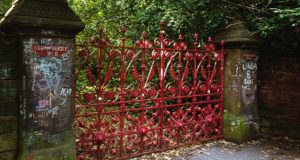
Eventually John descends into confusion, the plethora of instruments building up around him suggesting he’s conducting some kind of weird orchestra in his head. The first line of the final verse….Always no sometimes think it’s me… again shows John prevaricating over what is going on, identifying himself with the lonely boy in the tree but then unsure about whether he ‘always’ or ‘sometimes’ is that boy. He confides directly in the listener, sharing his uncertainty: … But you know I know when it’s a dream… There seems to be no solution to this uncertainty: …I think I know I mean a ‘Yes’ but it’s all wrong/that is I think I disagree…he concludes, contradicting himself several times in the same line. So John himself challenges the reality of the image he has created. It’s just a dream. Or is it? Whatever the answer, John cannot escape from the shadow his ‘tree’ has cast. As he mouths these contradictions we hear the discordant sound of snatches of tape run backwards in the background. Then the final ‘Nothing is real’ is accompanied by the full ‘orchestra’ of drums, horns, cellos, and guitars. The title line is repeated, and the cellos, svarmandal, drums and guitar lead us into a fade out, with the drums chugging like a train disappearing into the distance. But the song is not over. A distorted version of its melody suggests a reprise of the main theme, but now the music is being ‘played’ backwards. This coda suggests that the dream John evokes has not gone away, that it will repeat itself in a form which will keep recurring, or which will manifest itself in ‘inverted’ ways. Despite John’s offhanded and increasingly ambiguous reaction to the vision he is sharing with us, we are left with a feeling of distinct unease, an impression that ‘Strawberry Fields’ could easily be the location of a nightmare, a place of terror where we might drown in a maelstrom of our own conflicting thoughts. By inviting us into his dream John locates a ‘Strawberry Fields’ – a place of spiritual isolation – inside the listener. But rather than ‘playing the guru’, inviting us for a smooth ride as he had done in Tomorrow Never Knows, John here admits to being confused and adrift. Yet the feeling he conveys throughout the song is primarily one of equivocation. Thus the song is ultimately highly ambiguous. It gives us a glimpse of a dark, shimmering and possibly dangerous world. But how we view that world is up to us
 .
.
Ultimately Strawberry Fields Forever makes little specific reference to the Liverpool of John’s childhood. It is almost entirely philosophical song, yet one without certainties. It is a kind of journey without an end in sight. It is tempting; indeed very tempting; to fill in the ‘gaps’ in the song with the wealth of detail we know about John’s childhood. We know he was abandoned, in different ways, by both of his parents and that the Strawberry Field was a local Salvation Army hostel that the young John used to visit and play in the grounds of. To him, it may very well have been a magical place, but there is little suggestion here that the child – if it is a child – in the tree, is particularly happy or full of wonderment. Yet although overall the tone of the music suggests sadness, Strawberry Fields is not really a sad song either. The figure in the tree may well be an isolated and confused little boy, unable to express his deep trauma and personal confusion. But the present day narrator is questioning whether he himself is still that person. The courage and imagination he shows in this song, confronting his fears yet so lightly dismissing them, shows that he is trying to rise above these childhood traumas to remake himself. ‘Strawberry Fields’ is, like Dylan’s Desolation Row, a place beyond normal consciousness where ‘nothing is real’. But John lacks Dylan’s assured intellectual detachment and his grasp of imagery. In this song John invites us on a journey with him, asks us to feel his inner pain, then brushes it away. …I think…he yawns …it’s not too bad… If the song has an ultimate ‘message’ it is that although we may need to confront our ‘inner child’, he or she does not have to imprison us. In the end, Strawberry Fields Forever’s swirling musical textures and lyrical conundrums celebrate spiritual and creative freedom by shrugging off the past and locating the artist, or the individual, in an eternal present. It tells us that, whatever has happened to us in our childhoods, no matter how traumatic, we all have the power to remake ourselves.
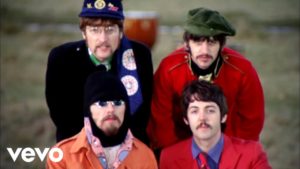
Penny Lane is, at least on the surface, a very different kind of creation. Whereas John’s song is abstract and internalised, Paul creates a world of concrete, visible images and rather loveable, eccentric characters. As with Eleanor Rigby or For No One, the images in the song are precise, clearly defined. And while Strawberry Fields consists of a muddy, sometimes confused, wash of sound, Penny Lane is at least as as bright and cheerful-sounding as Good Day Sunshine or All My Loving. Although it is another multi-layered musical construction, using many different instruments, its sound is very ‘clean’, with each instrument clearly delineated. The two songs have often being taken as models of the different musical approaches and viewpoints on life of John and Paul. It’s hard to imagine that this is really the same ‘band’ playing both numbers. Yet both songs come from a similar intent and though one appears clearly to be ‘Paul’s’ and the other to be ‘John’s’ it’s hard to know exactly how much each contributed to the other’s work. And Penny Lane, for all its whimsical cheerfulness, is in many ways as much an ‘inner journey’ as Strawberry Fields. Though it names actual existing features of a real district in Liverpool – there really was a ..shelter in the middle of a roundabout… and a barber’s shop in Penny Lane – Paul uses these elements for a similar exploration of memory. The group of characters he creates, and their setting, are like a brightly coloured cartoon. It is as if we are seeing Paul’s imagined world in garish Technicolor. He remembers his childhood with apparent fondness, but though it may appear to present a rather cosily nostalgic vision, Penny Lane is still a a mental construction in the mind of the narrator, a means of transcending the past and ‘being here now’. In Strawberry Fields ‘nothing is real’ whereas in Penny Lane everything is real. Perhaps a a little ‘too real’.. Ultimately the world he creates is just as much a fantasy as John’s darker vision.
Like Strawberry Fields, Penny Lane is a kind of ‘mini-symphony’, using many varied musical elements. Paul’s bass is highly prominent while Paul, John and George Martin all feature on keyboards. There are snatches of harmonium, tambourine, bells and a range of percussive devices, all overdubbed by various Beatles to add a series of sound effects to support the song’s narrative. John and George’s backing vocals are used as textural elements in a similar way to Brian Wilson’s treatment of The Beach Boys’ voices on the monumental Pet Sounds (1966), an album which had greatly influenced Paul. A whole group of classical session players feature on flutes, piccolos and oboes. Perhaps the most prominent sound is a jaunty trumpet solo in the middle of the track played by session musician David Mason. All the musical effects are again subject to manipulation, with voices being double-tracked and various musical elements being slowed down or speeded up. Paul’s bright, insistent melody is instantly memorable and despite its rich musical ornamentation Penny Lane remains a song which could be performed in a simpler way and whose appeal is decidely cross-generational.
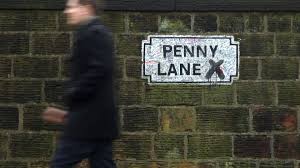
The song begins by taking us into a specific location – the barber’s shop – where we focus on a series of ‘haircut’ photos, the phrase …of every head he’s had the pleasure to know…suggesting that the barber knows his customers personally. It seems that the shop is a kind of social centre. Immediately the song generates a nostalgic sense of community which is reinforced by the cheery lines: …and all the people that come and go/stop and say ‘Hello’… The cheerfully plodding bass line, snatches of piano and a little trumpet flourish all support the atmosphere of mild nostalgia. Next we meet the banker who …never wears a mac/in the pouring rain… a snapshot of the stiff-upper lip, repressed middle class professional whom the ‘little children’ laugh at behind his back. We can imagine Paul himself and his mates on the street, taking the mickey out of such a character. …Very strange!…Paul declares, before engaging in a seamless transition into the chorus, telling us that …Penny Lane is in my ears and in my eyes… The snatches of trumpets used here suggest a brass band, adding to the sepia ‘Northern-ness’ of the feeling being generated. The image of the …blue suburban skies…underneath which the narrator, revisiting his childhood haunts, sits, further adds to the bright ‘sunniness’ of the scenes.
The sudden transition from chorus to verse, as Paul sings …meanwhile back/in Penny Lane… is like a cinematic ‘jump cut’, suggesting the narrator’s mind being suddenly jolted out of his moment of reverie. The next character we meet is another loveable eccentric, the fireman who keeps a portrait of the Queen in his pocket and appears to spoend his day polishing his ‘machine’ to make it as shiny as possible. We are told he has an ‘hourglass’, a rather bizarre touch giving an image of someone who is proud of being always on time as well as ‘spick and span’. Again the nostalgic, cartoonish world of Paul’s dreamscape is being gently mocked. …It’s a clean machine!…he cries, as a ‘fireman’s bell’ rings, followed by the trumpet solo and washes of harmony vocals. The next chorus provides a variation on the others, taking us from the world of childhood to that of adolescence. …A four of fish and finger pies/in summer…cleverly conflates a ‘fish and chip order’ with a (rather cheeky) suggestion of teenage sexual fumbling. Here is Paul again, as a teenager, down the alley by the chip shop, trying to make out, copping a feel if he is lucky. And if he is really lucky, maybe even a little bit of ‘finger pie’.
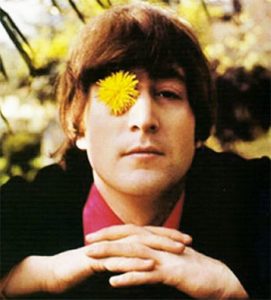
The last verse shows us a ‘pretty nurse’ selling ‘poppies from a tray’, another nostalgic image, though this is rather undermined by the lines …though she feels as if she’s in a play/she is anyway… Revisiting his childhood haunts, Paul now experiences his memories through a kind of hallucinatory screen. The characters in his dream are becoming self aware. Finally we are returned to the barber’s shop, where we again see the banker, who is sitting waiting for a haircut, and the fireman, who …rushes in from the pouring rain… The final repeated chorus features a triumphant trumpet flourish before Paul repeats …Penny Lane!… and the track ends with a fadeout of understated feedback. Again we are returned to the present day.
Penny Lane and Strawberry Fields Forever make manifest the light/dark contrast which had been explored throughout Revolver. They also clearly demonstrate, perhaps more than any other two songs, the difference in approach and personality between John and Paul. Yet these songs are clearly companion pieces, deliberately made to complement each other. Written at a historical moment when immediacy was valued above all else, they both filter childhood memories through an acid-influenced perspective, placing memory in a kind of eternal present. Both songs have a definite feeling of detachment from their subject matter. Both are ‘dreams’ in which present reality and memory mingle almost seamlessly. Behind their extremely different and highly elaborate sonic structures they both articulate the key insight that LSD had given them (and, of course, many others): that childhood wonder is not something that need be surrendered with the coming of adulthood. To those who are ‘turned on’, innocent delight is a feeling that can be perpetually rekindled. The inference is that as we ‘grow up’ we need not lose that magical spark we are all born with, despite whatever pressures the ‘straight world’ places on us. This deeply spiritual insight – making the generation of childlike delight a kind of ‘sacrament’ – will form the basis for the Beatles’ next major work, Sgt. Pepper. And it is at the very heart of the cultural and spiritual ‘revolution’ which defines the era that The Beatles bestrode.
A version of this text appears in WHO COULD ASK FOR MORE: RECLAIMING THE BEATLES
BEATLES SITES


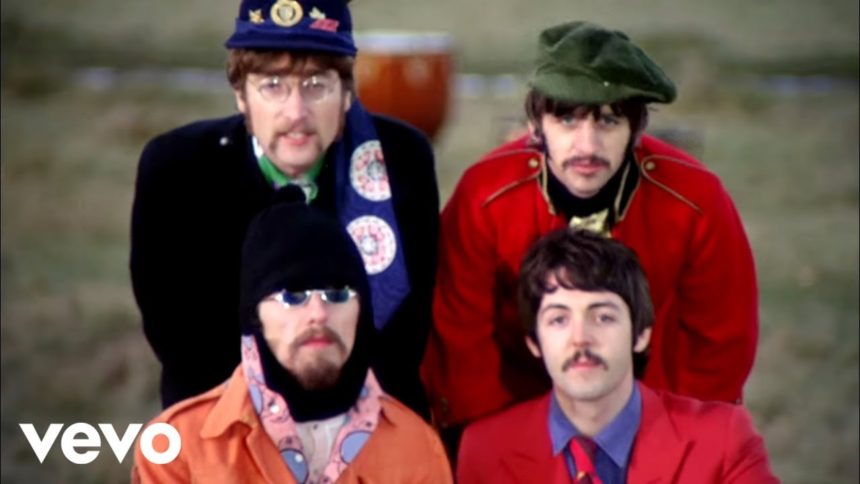
Leave a Reply